Experiments in botany: sheet mulching
I built this bed last spring around two existing trees.

The first pic is of a nitrogen-fixing Eastern Redbud, and the second is of an Elberta Peach. I didn't want to hurt their roots by digging, so I ignored the advice of my permaculture peeps, who said that killing Bermuda grass requires flipping the sod roots up before mulching it. I bought a couple of cubic yards of topsoil to fill that bed, though. So far nothing that I didn't plant has some up through it. A few maple seedlings, but they probably came in later. So it seems that was effective.
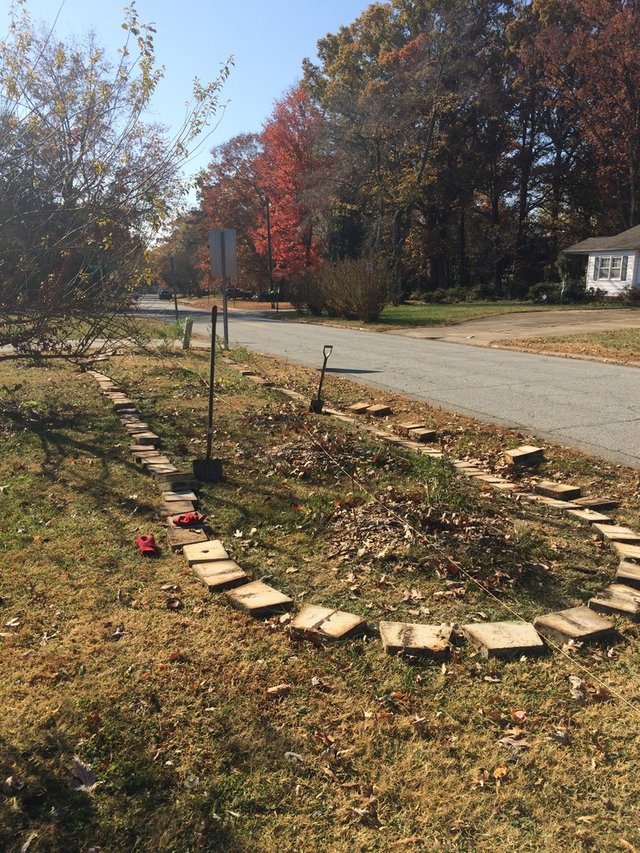
This fall, working on a second bed, I did not want to buy more topsoil. I also did not want to flip all that sod, or hit the wire for the invisible dog fence, which runs right under the Goji bushes. So my son and I went for a middle ground. We cut the roots of the grass with spades, hopping up to use our weight to push the blades down through the roots into the clay beneath.
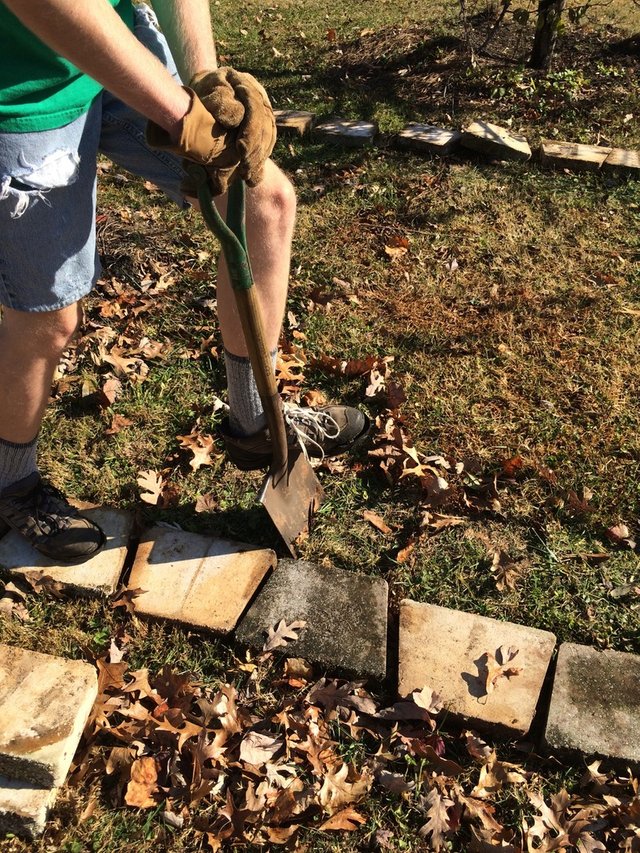
This was a pretty good aerobic workout. We both switched to shorts for the second hour, though the weather was only in the low 50s. We had marked the line of the dog fence through the bed, but not the point where it right-angled to follow the property line. Should have done that; because when you're tired from two hours of sweaty labor, you may forget why your original bed design left one goji bush outside the boundary and expand it. So yes, we cut not only the dog fence, but the blessed Internet line as well!
Not my best moment. At least I was working at my own house and not a Habitat project with the gPg.
All that work would be just aerating the soil, making the grass grow better, if we didn't also block all the light and most of the water.
First, some wood ashes from our charcoal grille.
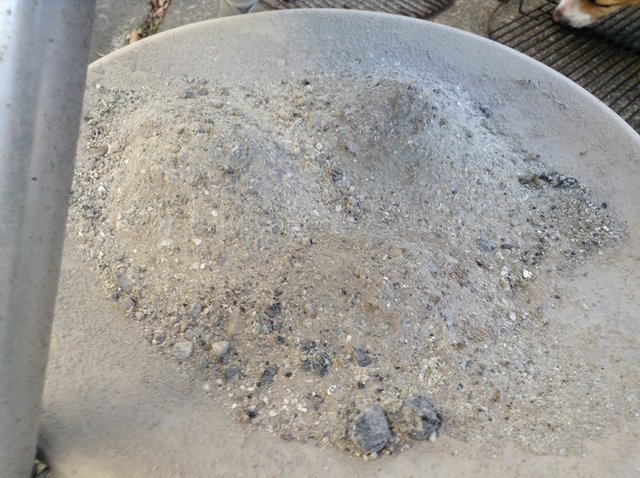
They have lots of minerals but tend to make the soil alkaline, so we spread them thin.

Second, a thick layer of leaves to block light, absorb water, and break down into fertilizer.
This was 7 bags of mixed oak and maple leaves, collected from my neighborhood, where I can see into both the yards they came from and the bags themselves.
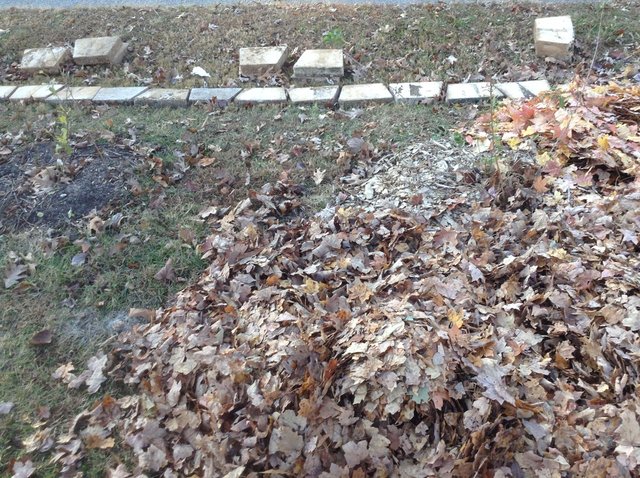
I don't want leaves from those pretty green all-grass yards, which are probably treated with broadleaf herbicides like Scot's TrueGreen (aka Roundup). Neither do I want lots of chopped-up grass and weeds, which is probably full of seeds, because I'm not putting them through a hot composting process to kill the embryos. The maple leaves are paper-thin and should break down relatively quickly. The oak leaves are thicker and break down more slowly. They're also acidic, which will balance out the wood ashes.
Third, sheets of cardboard gathered from the recycling dumpsters at the local shopping center, which will block light and shed water for a while.
I usually pull off as many of the glossy labels and as much of the plastic packing tape as I can, less because I am worried about toxins than because I just don't want to look at that crap poking out of the ground for years while it very slowly breaks down. I leave them outside for a few days to let the higher humidity weaken the glue and then peel the labels off with a knife.
Fourth, rotten wood to hold the cardboard down so the winter winds don't blow it away.

More water absorption and fertilizer.
Fifth and finally, free, finished compost from my own pile that I can plant into.
I haven't gotten to this stage yet, as it has finally started to rain. The compost isn't ready yet anyway. I'll end up dividing some other perennials to stick in there (there's a big yarrow I have my eye on). Starting these plants now will mean they have plenty of time to establish their root systems before the killing heat and probable drought of next summer, assuming our current El Nino continues for a while.
Follow me @plotbot2015. I post about science, politics, and gardening, in and around the SF book reviews.
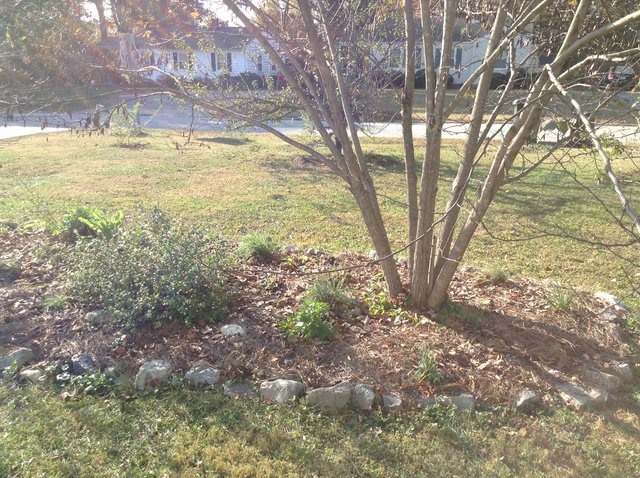
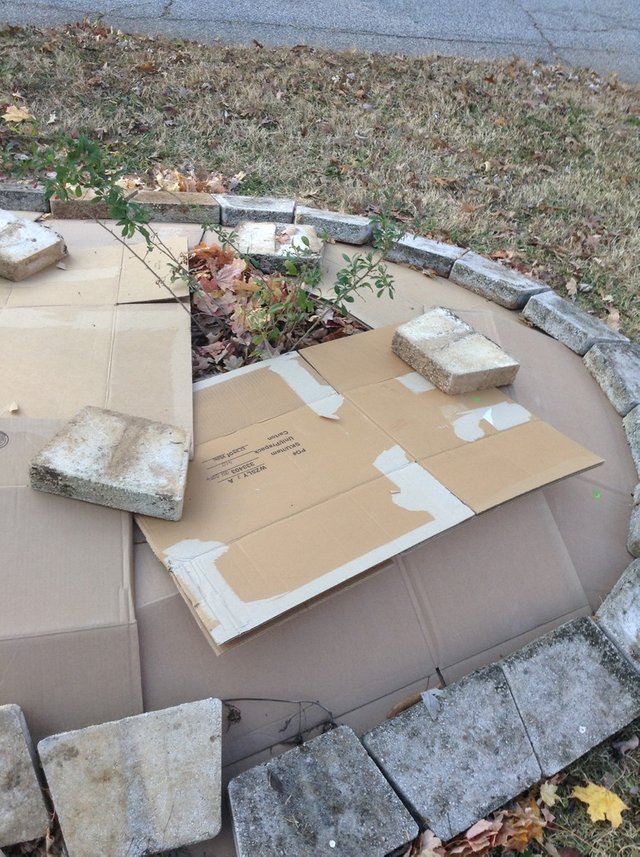
Upvoted by @gardening-trail
Thank you for following and upvoting @gardening-trail
Read our guidelines here
Thanks!
Hi @plotbot2015
You really went through a lot of trouble to get it wright, I would like to see the end result when your plants are growing.
You can see the first one in the first two photos, but this one won't likely have much in it until spring. Thanks for the comment.